
Discovering your menstruation as a spiritual practice
Yasmine understands her menstruation as a spiritual practice and shares in this interview how she is connecting more with her own body through cycle awareness.
It started with the bleeding. For Resi and for me and for every contributor. This project, which we named “stained- perspectives on menstruation” in the middle of the year, can be traced back to a seemingly simple thing: menstruating.
Seemingly simple, because menstruation is usually discussed as a universal experience that unites all menstruating human beings and is identical. The fact that for many people, especially for nonmenstruating persons, these and other superficial assumptions persist in the long term is mainly due to the fact that menstruation is rarely discussed openly. For hardly any other thing is there a wider range of evasive terms and embellishing representations, but in the end, all that is and remains is blood flowing from a vagina.
Because of the social stigmatization that in patriarchal structures clings to menstrual blood, bleeding from the vagina is something that is expected to happen and to be discussed behind closed doors. From people in white cotton dresses dancing through the streets, going out to party with friends or strutting to work in heels, to illustrations of blue liquid on menstrual pads that are supposed to “neutralize” odors or protect against “leakage”, the advertisements of established menstrual products manufacturers are full of abstract representations of periods.
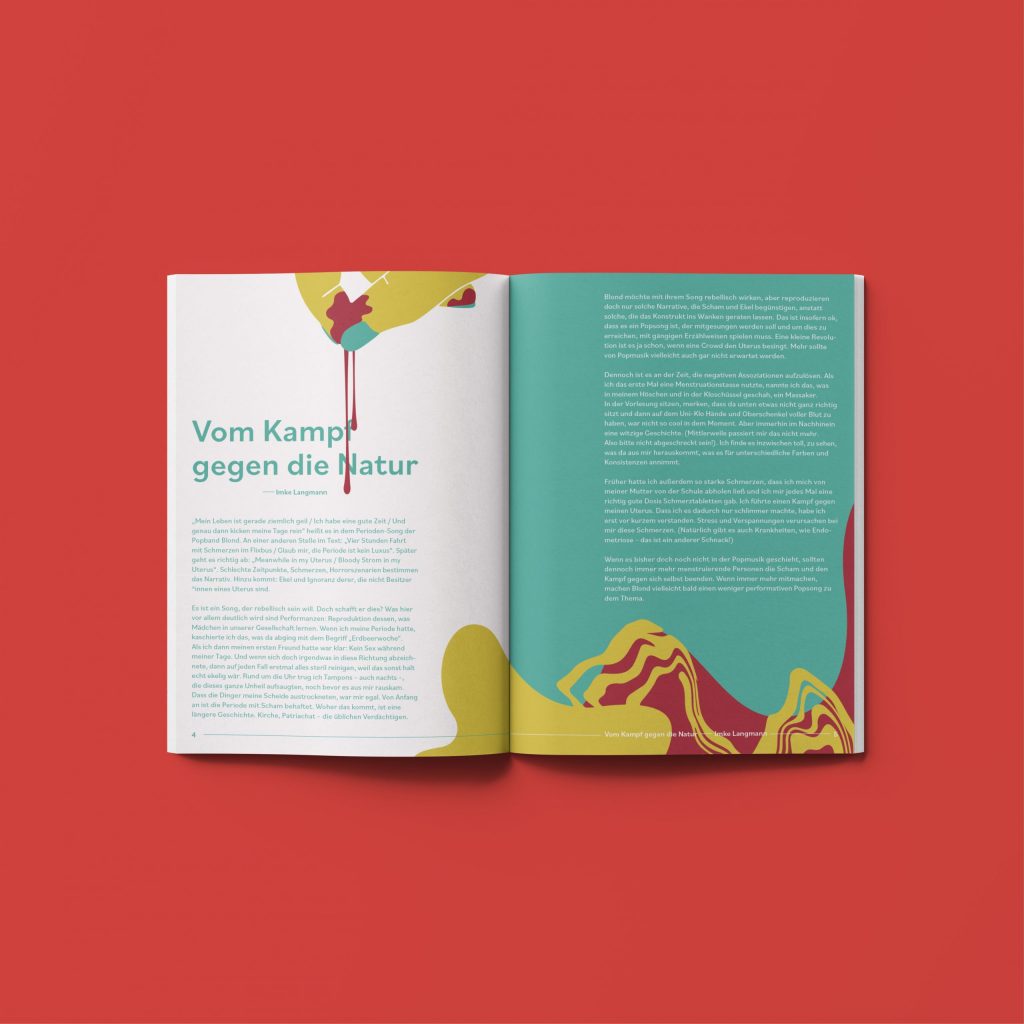
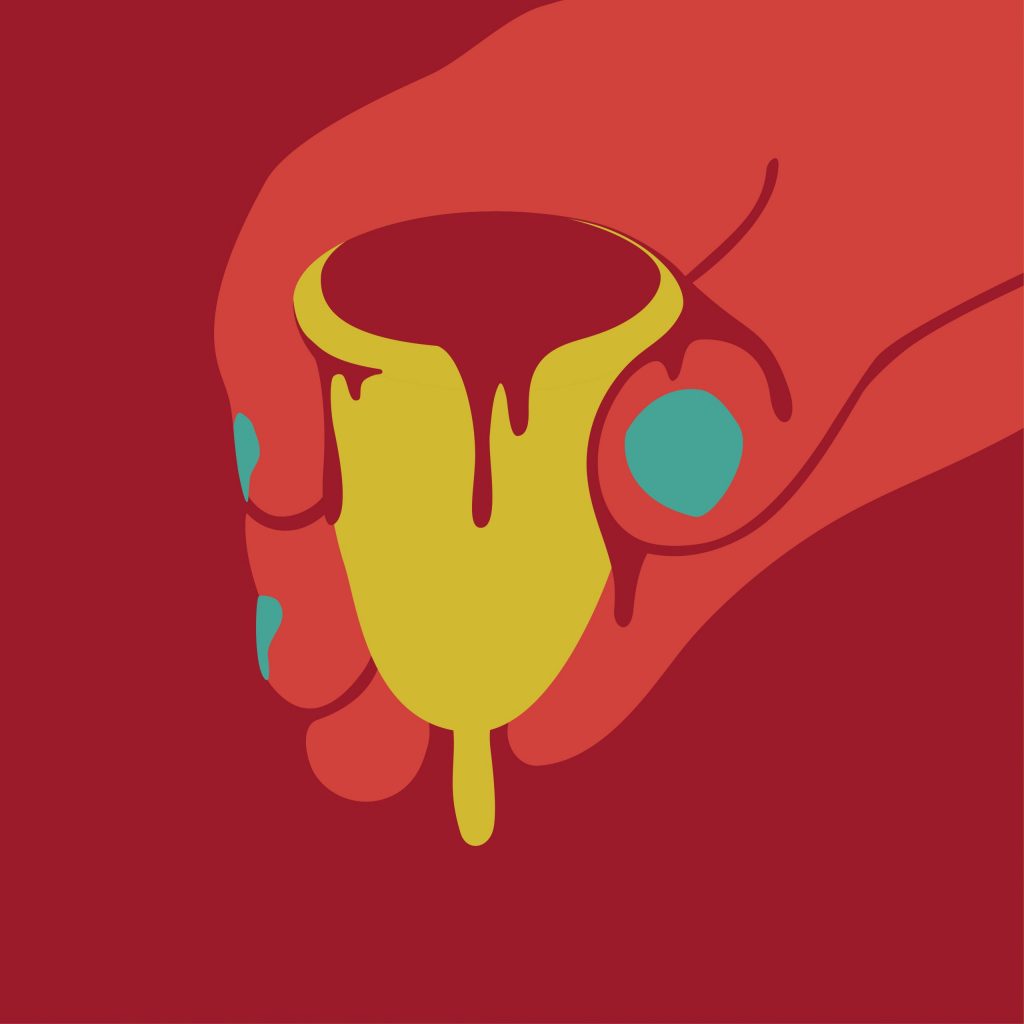
Photo Credits: Vanessa Voigt
But apart from TV commercials and outdated schoolbooks, there are more and more menstruating persons who make room to talk bluntly about menstruation and bring the subject into the public eye. Resi and I started working on our Zine “stained- perspectives on menstruation” at the beginning of the year and with the help of an open call we asked menstruating people to share their menstrual experiences first with us and later with the readers. We tried to limit the form and content of the potential contributions as little as possible to give everyone the freedom to approach the topic as they wish.

The result is a 200-page publication with 51 contributions from 38 menstruating persons in German and English. The submissions and response exceeded our expectations many times over. They address aspects such as the first menstruation, menstruating at school or at work, conversations with non-menstruating persons, sex or sports during periods, endometriosis and menstrual problems. Exactly this variety of experiences is the reason why we started the project in the first place. We wanted to collect perspectives on menstruation in order to demystify this topic, to let menstruating persons speak for themselves and to make visible that the experience of menstruating is also individual.
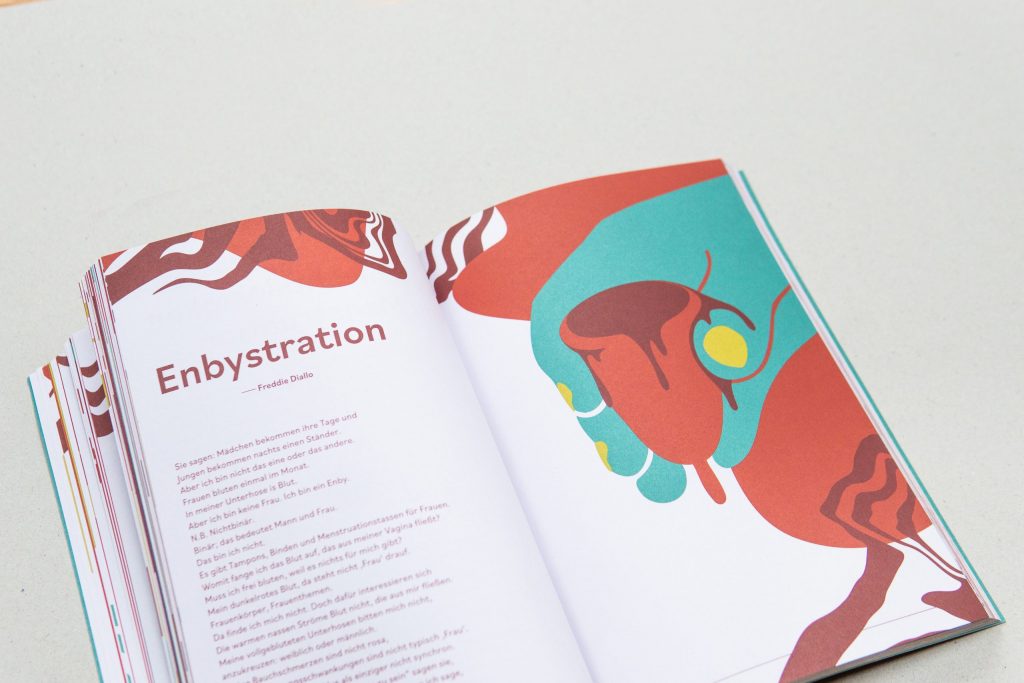
We share this common ground with all contributors and the people who made “stained“ possible in the first place. Menstruation is something that connects us. It is possibly our lowest common denominator. But on closer inspection, it is all the differences that stand out in our menstrual experiences and show that they are in fact individual. They are also closely linked to our biography and the privileges or experiences of discrimination we have or are exposed to. For periods differ not only in the course, consistency and color of the blood or in the accompanying symptoms (which, by the way, are all too seldom discussed and thought about), but also in the way they are treated by our fellow human beings and the structures in which we move.
Starting with the German Wikipedia article on “Menstruation”, in which it is written that menstruation marks the “physically fertile time in the biological life […] of a woman”, the false assumption is still being reproduced that all menstruating persons are women* and all women* are menstruating. Not only in the article just mentioned, but also in numerous other articles, commercials, blog posts and podcasts, the term “women” is used when referring to people who bleed from their vaginas more or less regularly. This deeply rooted linguistic expression, however, excludes- whether consciously or unconsciously- menstruating non-binary and trans* persons from the discourse and ensures that their menstrual experiences are heard and thought about much less often than those of cis women. Therefore, one aspect that runs through our entire Zine and has colored each of these pages is that menstruation blood has no Gender.
We believe that every contribution has changed and shaped our project in an inimitable way. “stained” has been titled with this expression, as we found two of the numerous German translations to be very well fitting for our Zine. Because, although many people still insist that menstruation belongs hidden, most menstruating persons make their periods visible in the bloodstains they leave behind, for example on the beige seat cushions in the waiting room or on the lightest jeans during math lesson. The fact that the thematization and conscious visualization of menstrual experiences continues to be stigmatized is ultimately reflected in the fear of many menstruating persons of discoloring, “staining” something – whether it is rooms or textiles – with their own period blood. We would like to celebrate that we have done it anyway, on 200 pages. You stained it!
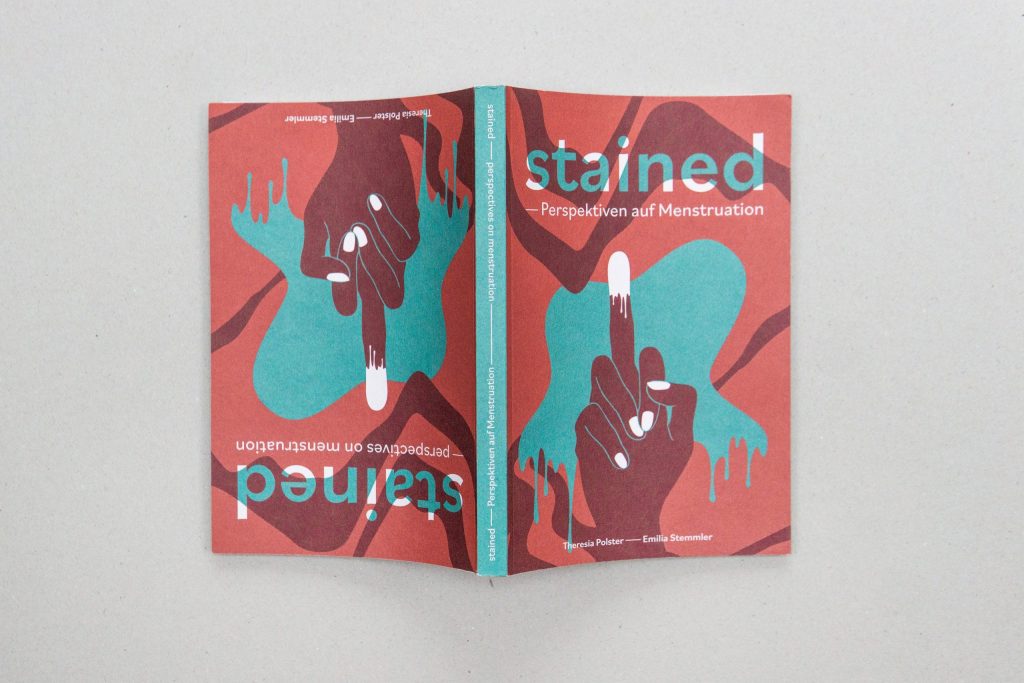
We hope that the contributions will lead to a broadening of perspective for some of our readers. For Resi and me, the contributions have definitely helped to broaden our understanding of menstruation. Especially non-menstruating persons can and should be sensitized by the project to what menstruating persons experience. And perhaps the collected perspectives on menstruation can lead to further in-depth discussions and realistic representations of menstruation. Because: Anything you can do, I can do bleeding – but we should not be expected to show the same performance when we menstruate. And certainly not that we have to put up with the whole thing on top of it all in silence and without a sound.
Emilia
Editor’s note: Editor’s note: We at Vulvani are proud to be a part of the zine “stained – perspectives on menstruation” with our article “Three wishes and Free Bleeding” as well as an image contribution of our menstrual art. Thanks for your valuable and important educational work, dear Resi & Emilia! And buy and give away the Zine to dear people in your life, because the final product is really unique!
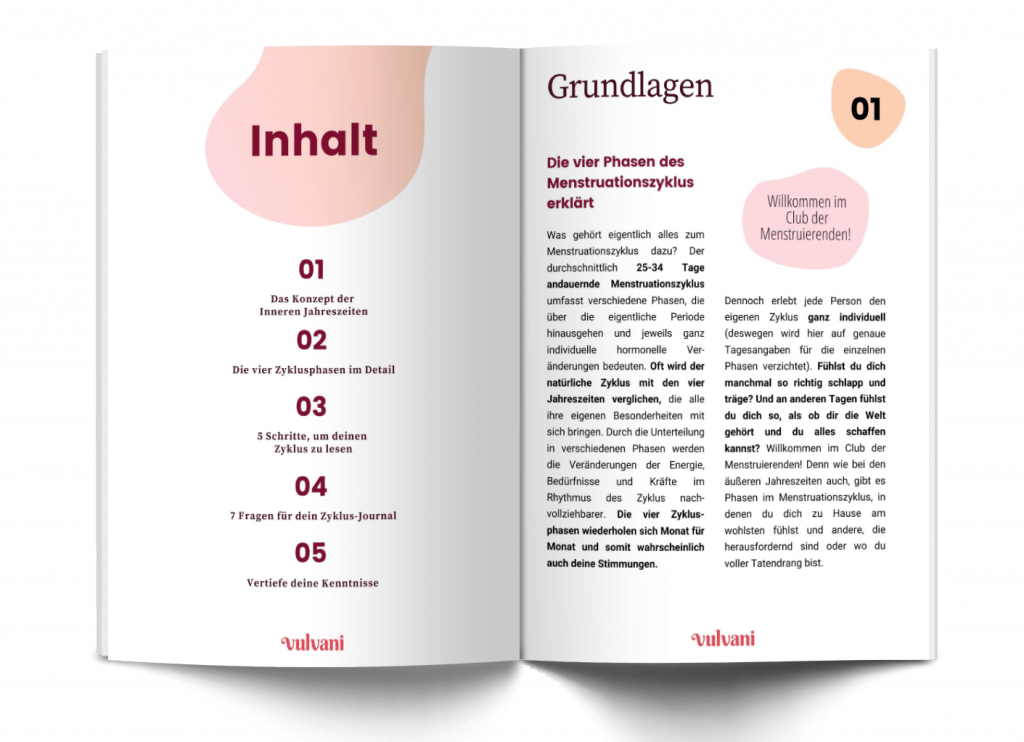


Yasmine understands her menstruation as a spiritual practice and shares in this interview how she is connecting more with her own body through cycle awareness.

What options are there for male birth control? Ailsa delivers an overview of what is available now, and what may come in the future.

Sustainable underwear? The founders of TUKEA talk about fair labour conditions, body diversity and body literacy.
…and empower countless women to make empowered choices about their bodies!


1 Comment.
How can I purchase (if they’re still available) a copy of the zine Stained. I’m currently a high school student working on an independent studies project where I am creating zines to bring a conversation to menstruation at my school. I would love to get some inspiration from their zine!
Thank you!